We’re excited to introduce you to the always interesting and insightful Nichole Terrett Troyer. We hope you’ll enjoy our conversation with Nichole below.
Nichole, thanks for taking the time to share your stories with us today What’s been the most meaningful project you’ve worked on?
I’ve spent most of my career working full-time in non-profit work and creating art as a side hustle. Over the years, I’ve found the most joy in my “day job” when the two intersect. Often, when a boss or colleague finds out I’m an artist, I quickly become deeply involved in or leading the creative projects for the organization (usually storytelling, design, or fundraising initiatives). I’ve always encouraged this because my most meaningful work is the intersection between my drive to create art and my heart for creating a better world for vulnerable and underserved people.
A few years ago, I was several years into working for a regional anti-human trafficking organization in my home state. I led our comms team and had just passed the fundraising responsibilities to new leadership because we had grown so much in my time there. I was excited for the extra capacity and time to share more stories of the women and girls our org was serving. It was an honor to witness and share about their life change and victory as these survivors found new ways of flourishing away from their traffickers and the people who had abused them. This shift also lined up perfectly with the organization’s 20th anniversary, and I wanted our team to help our staff and community celebrate big. We spent months brainstorming ideas about how to celebrate and share stories from the last 20 years.
Part of the conversation during our planning sessions was the idea that these women and girls had so much stolen from them throughout their lives that we wanted to make sure they got to tell their own stories in their own ways – to empower them to take their voices back. I had been thinking for a while about “non-traditional” ways to do donor fundraising gatherings and suggested an art show – one where any person we had served over the past 20 years could volunteer to share their story through art, performance or written word. We would also open this opportunity up to staff, past and present to share their experiences working with victims and survivors. Plans started to come together, and I and my team designed the campaign branding and messaging for the show – it would be a two night event for anyone connected to our organization to come celebrate and view an art show and performance – all curated from survivors and staff. Our theme was focused on joy and how, like in the Japanese art of Kintsugi, repaired things (or people) are treasured, and often more beautiful than before they were broken. I wrote a call for entries describing what we were looking for to build the show and we sent it out. I was worried no one would respond, or that we’d get very little art that could be shown. In the meantime, I worked on my own pieces for the show – a photography series representing the beauty of the women and girls who had survived and found healing and repair.
I didn’t need to worry, though, before the deadline even hit, scores of artwork from all over our community came flooding into my office, and the passion, stories, and diversity of work floored me. People also submitted proposals for performances, poetry, spoken word, and music. We’d have a show. The woman and girls who submitted art showed such strength and vulnerability in their work. I had more than enough to curate something impactful. Our team worked furiously to find a venue and a caterer, and created plans for a temporary gallery space we could build in a day and take down after the show.
The weekend finally came, I’d worked tirelessly for weeks, often late into the night, to make sure all the details for the show and event were ready. Our team even designed a collaborative mural piece with words of joy from participants and staff in every area of our programming, so even if someone didn’t want to submit something of their own, they could still have a voice and participate. Joy and evidence of healing were so evident. 20 years of dedication and love from staff and volunteers permeated every aspect of the event.
We had hiccups. Of course we did. There are always hiccups when you run a major event. When we went in the morning of to set up we realized the floor wasn’t even, so we had to adjust our gallery walls on the fly. I ended up losing my voice after fighting a bad cold the week before, and as MC, I wasn’t sure I’d be able to speak. Our caterer showed up almost 2 hours late and barely had the food ready in time for the doors to open. But it all came together. The walls and lighting looked amazing, the food was exactly what we hoped it would be, and after way too many cough drops and several bottles of water, I was able to open the show and share the heart and stories behind the work.
As I walked around that evening, speaking to volunteers, donors, survivors, and friends and family of the artists and performers, I was struck by the resilience and power represented in the room. Real, unspeakable pain and brokenness had been experienced. Much of which I’d never know the full extent, but instead of fear and despair, there was hope and perseverance. So many people told me, “That thing (call for entries) you wrote to ask for artwork – it inspired me and I felt like I could process through my stuff,” or, “when I read your words, I knew I had to create something to share my story.” That weekend was special. We ran the event for two consecutive evenings. Hundreds of people came through. Stories were told, hearts were shared. I was proud of the artwork I had created for the show. I felt like it beautifully represented my perspective of seeing hope restored in broken lives, But I was more proud, and still am, of how I was able to lead a team and create space for others to feel safe and courageous to share their art and stories, to show how they had overcome unimaginable pain and heartache.
As an artist, this is how I want to spend my career — helping others share their stories. Help them find healing in the creative process. So whether it is in large events like this or 1:1 conversations and coaching, or simply in sharing my own art, I work to continue on this path as an artist who creates safe spaces for others to thrive, and maybe a large piece of this is because I have overcome quite a lot of brokenness myself.

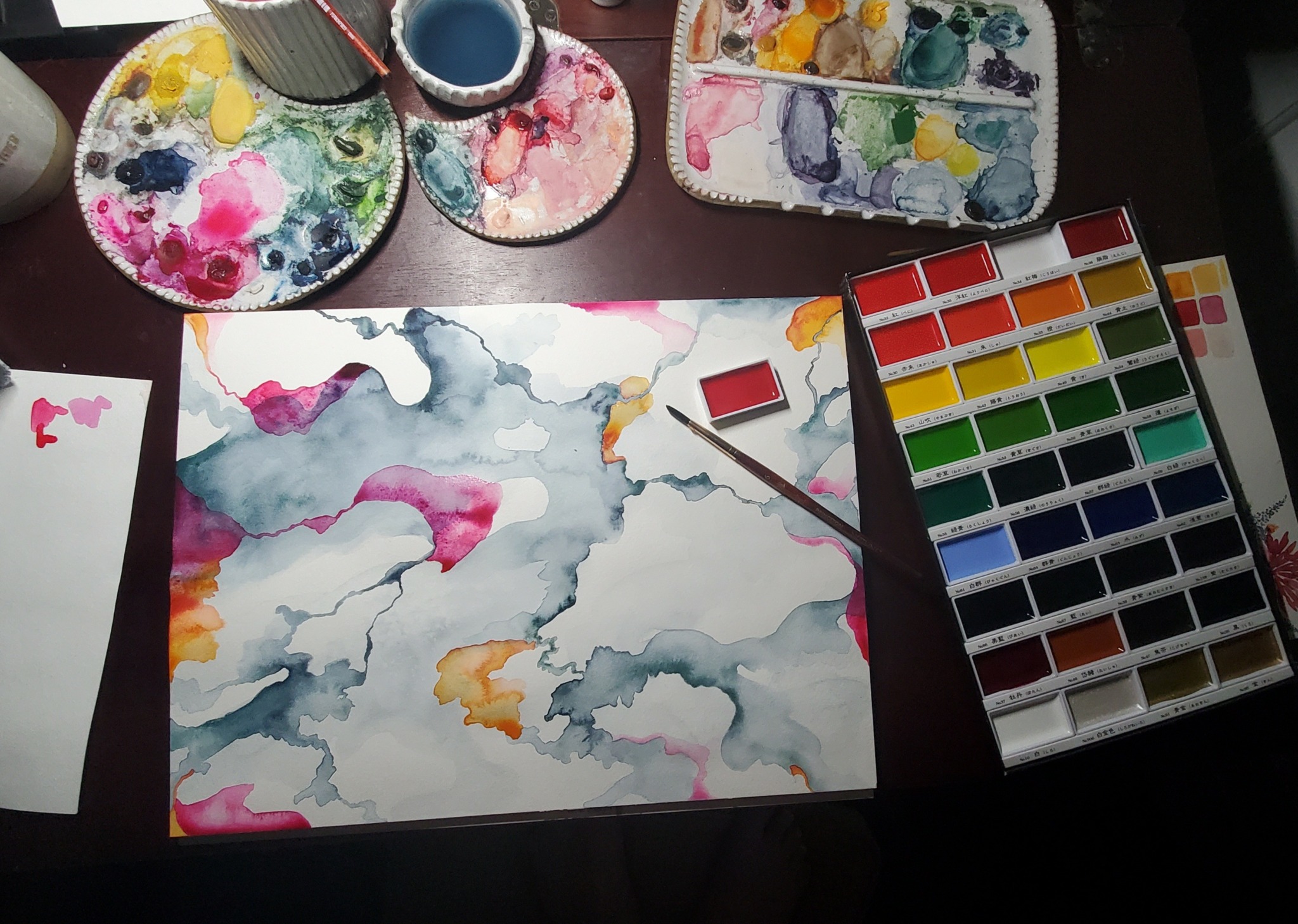
Nichole, before we move on to more of these sorts of questions, can you take some time to bring our readers up to speed on you and what you do?
Maybe this is a cliche, but I think I was born an artist. As a young child, I adored horses and wanted above all things to own one and be able to ride it every day. That was never a possibility, though, so instead, I picked up a pencil and paper and started drawing pictures I found of horses in calendars. —And I drew a lot, so much so that I started getting art supplies for almost every birthday and Christmas. Eventually, the love of drawing expanded, and I tried out painting, photography, and anything else I could get my hands on.
The hobbies stuck, and after high school, I decided to pursue an art degree in photography. While at university, I discovered a love for watercolor painting. (a medium I had previously written off.) and began to focus on watercolor as my primary medium. Since graduation, I’ve spent most of my career working full-time in non-profit work and creating art as a side hustle. Over the years, I’ve found the most joy in my “day job” when the two intersect. My most meaningful work is the intersection between my drive to create art and my heart for creating a better world for the people around me, especially those who have experienced deep hurt. This desire to help others find healing is largely because of my own experience…
As an adult, I experienced intimate partner abuse, and art was one of the ways I found my way back to myself. It helped me to heal. After almost a decade of hiding my voice and feeling worthless and lost, I woke up to myself. Art became a way to express myself more than it ever had been before. My focus today is to create a safe space for others to find their voice, to be courageous, and begin to heal. My watercolor paintings explore the practice of discovering myself and alternative ways of looking at the world, primarily through playing with color and abstract forms, and in taking an unexpected approach to everyday subject matter such as flowers and landscapes. It celebrates the uniqueness each of us carries as individual human beings, worthy just because we exist.
The goal for my work is to encourage others to look at the world – and even themselves differently. I offer prints and originals for those who want to purchase my art, and I speak to large and small groups about my story and art, encouraging people to follow up with me if they want to connect and share their stories.
I also offer small group and 1:1 creative recovery coaching sessions for adults that focus on combining art and self-care practices for people to step away from the hustle and chaos of the world to unwind, breathe, and find some restorative space. Creative classes are also available for kids in limited capacity. Sessions are available via Zoom or locally to Northeast Ohio, and I will eventually offer an annual creative retreat for adults who enjoy traveling.
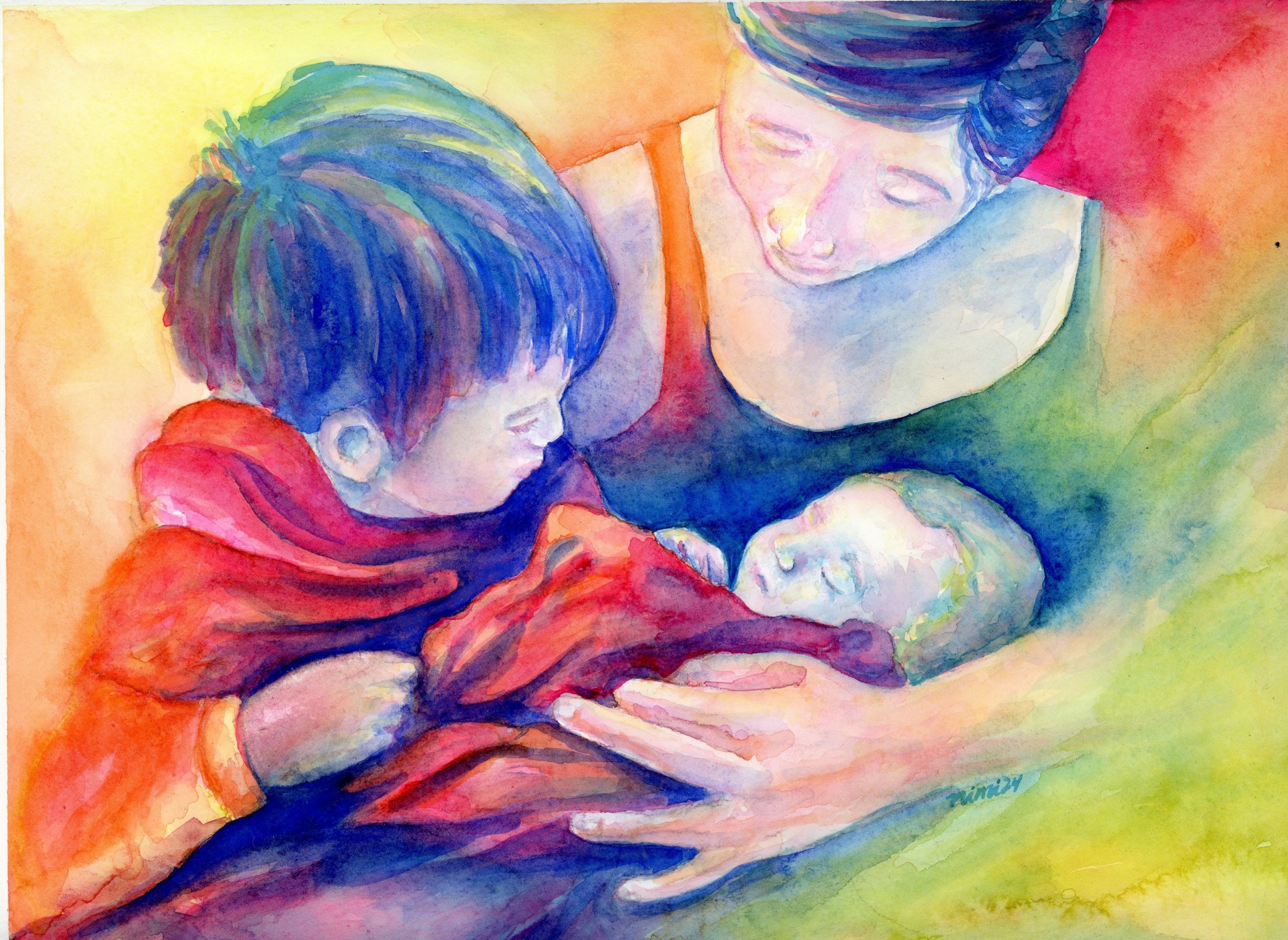
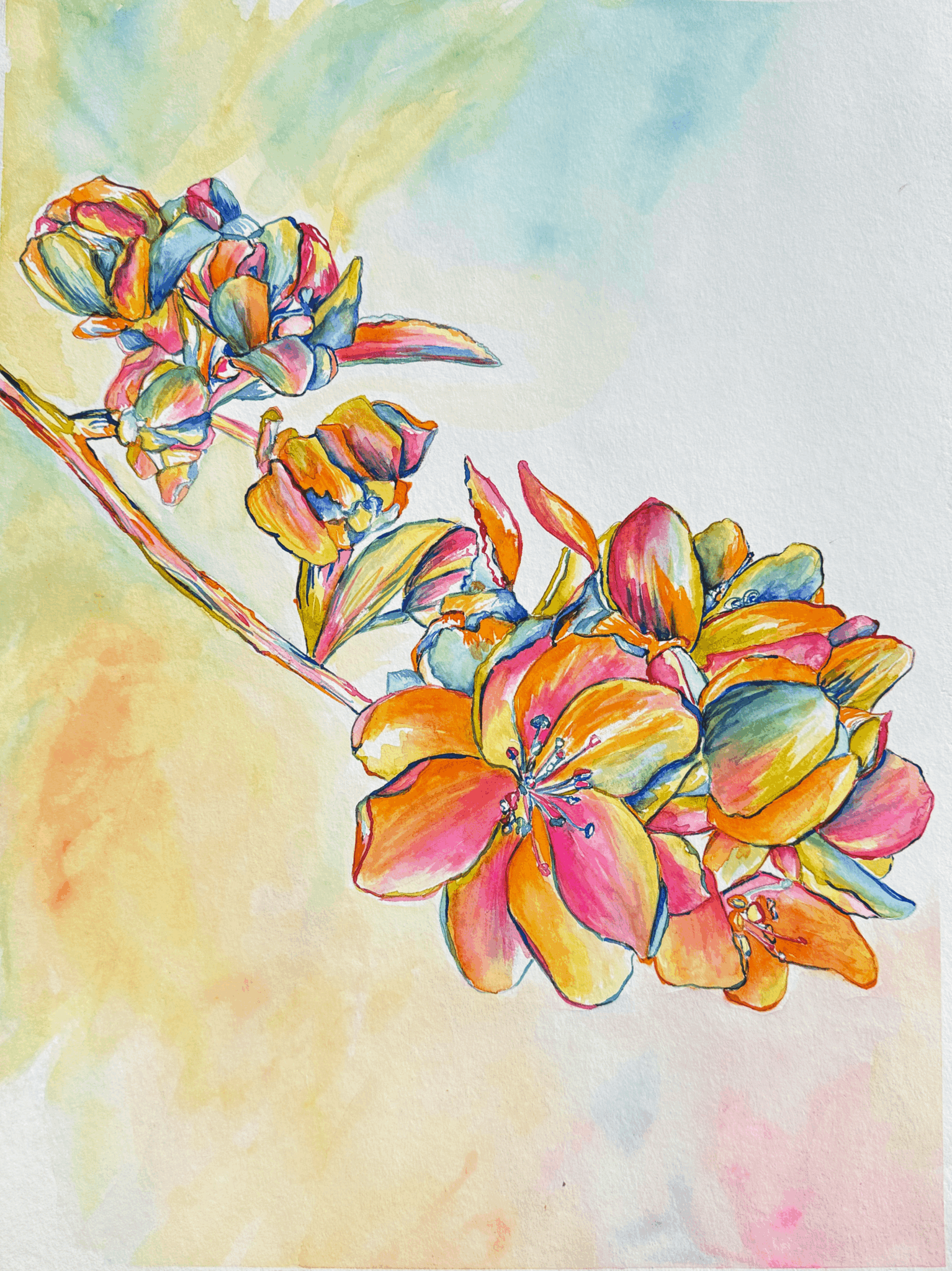
Is there a particular goal or mission driving your creative journey?
As an adult, I experienced intimate partner abuse. I was lost and didn’t know who I was, and did everything possible to keep him happy so I could feel a little bit safe. After almost a decade of hiding my voice and feeling worthless and lost, I started my healing journey. I was able to remove myself and my children from the situation and begin healing. Art became a way to express myself more than it ever had been before. It helped me find my voice and practice agency and self-care.
My focus as an artist today is to create a safe space for others to find their voice and authentic selves, to be courageous, and begin to heal. My experience and the healing and training I’ve done since then are centered around trauma-responsive care, and I hope my work can help anyone looking to discover more of their own uniqueness and voice, and to look at the world – and even themselves differently, with more grace, love and resilience, and discover creativity as a tool to get there.
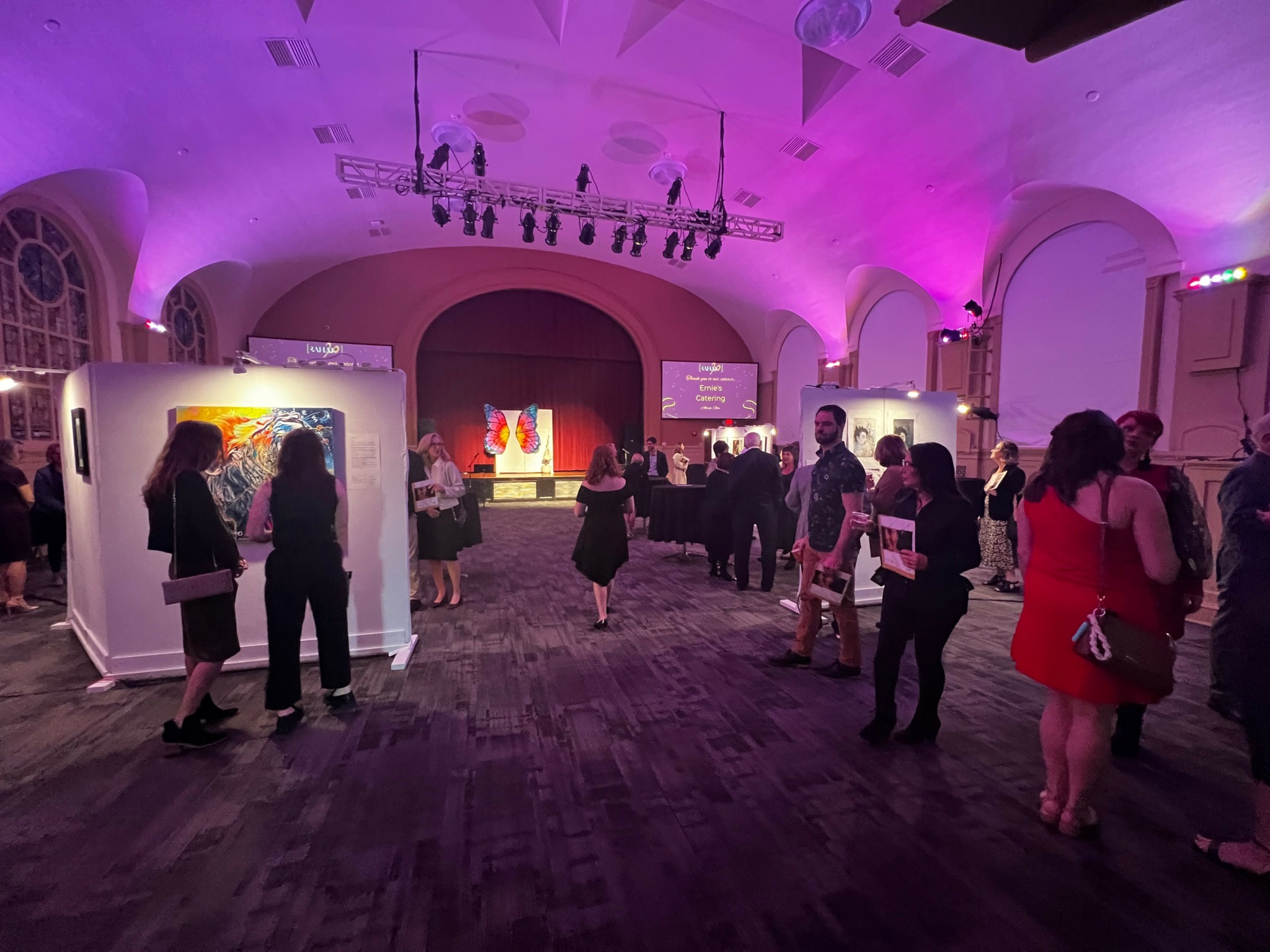

What’s the most rewarding aspect of being a creative in your experience?
The most rewarding aspect of being an artist is when I get to experience how my work has impacted someone’s life. I create art because I have to — it’s such a deep part of who I am — but I also care deeply about seeing people flourish and become who they are meant to be.
In the moments when I get a glimpse of how my work has helped someone move a little closer to healing or living more fully and authentically, I am floored and honored that I played a small part, and am so deeply moved. I’ll make art whether people see it or not. I’ll keep loving and caring for the people around me, whether it’s noticed or not, but when I get to see those moments, I know my journey has all been worth it.
Contact Info:
- Website: www.734studios.com (currently under construction as I just switched host providers, but should be up soon)
- Instagram: @nicholeterrett
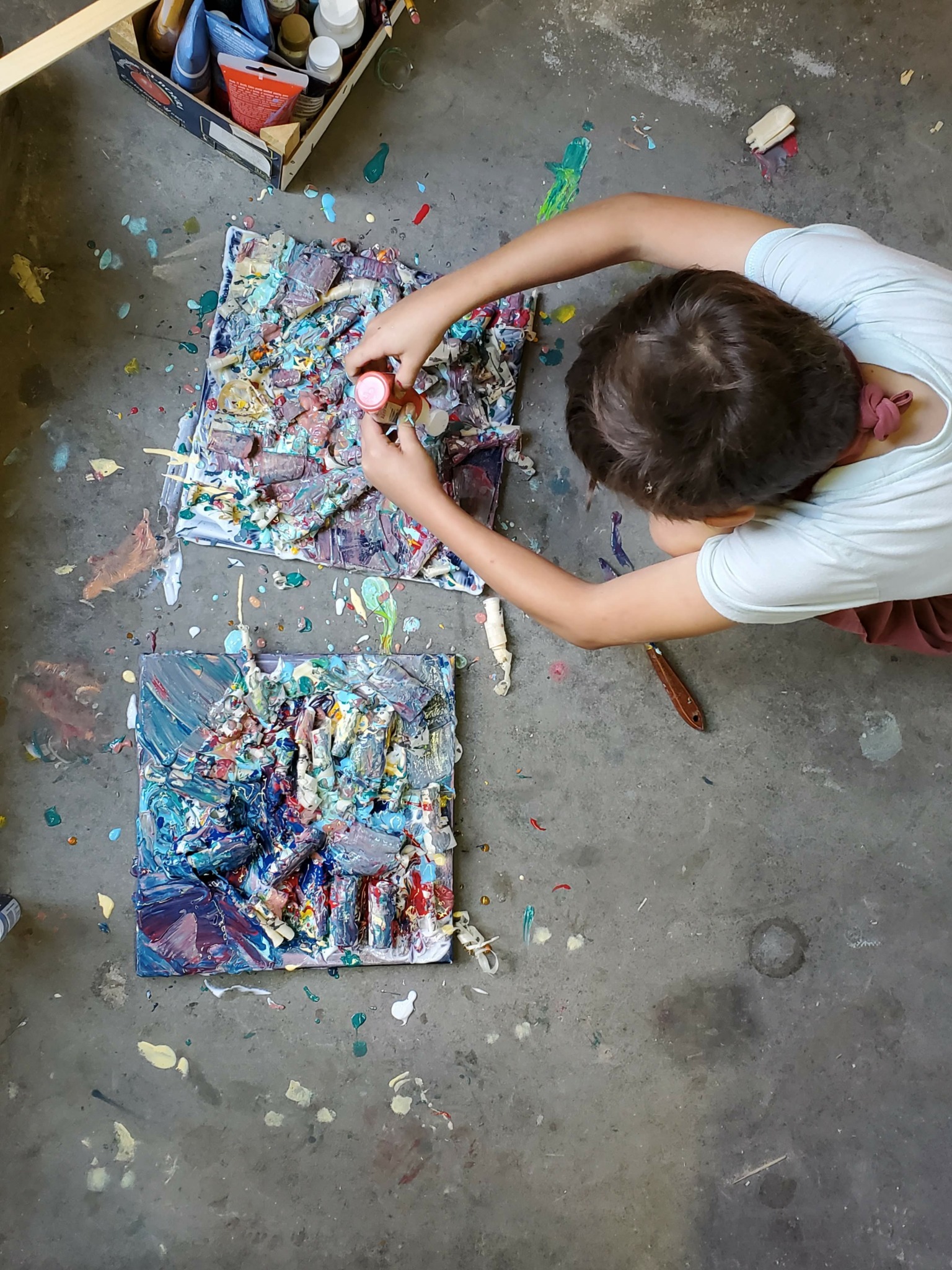
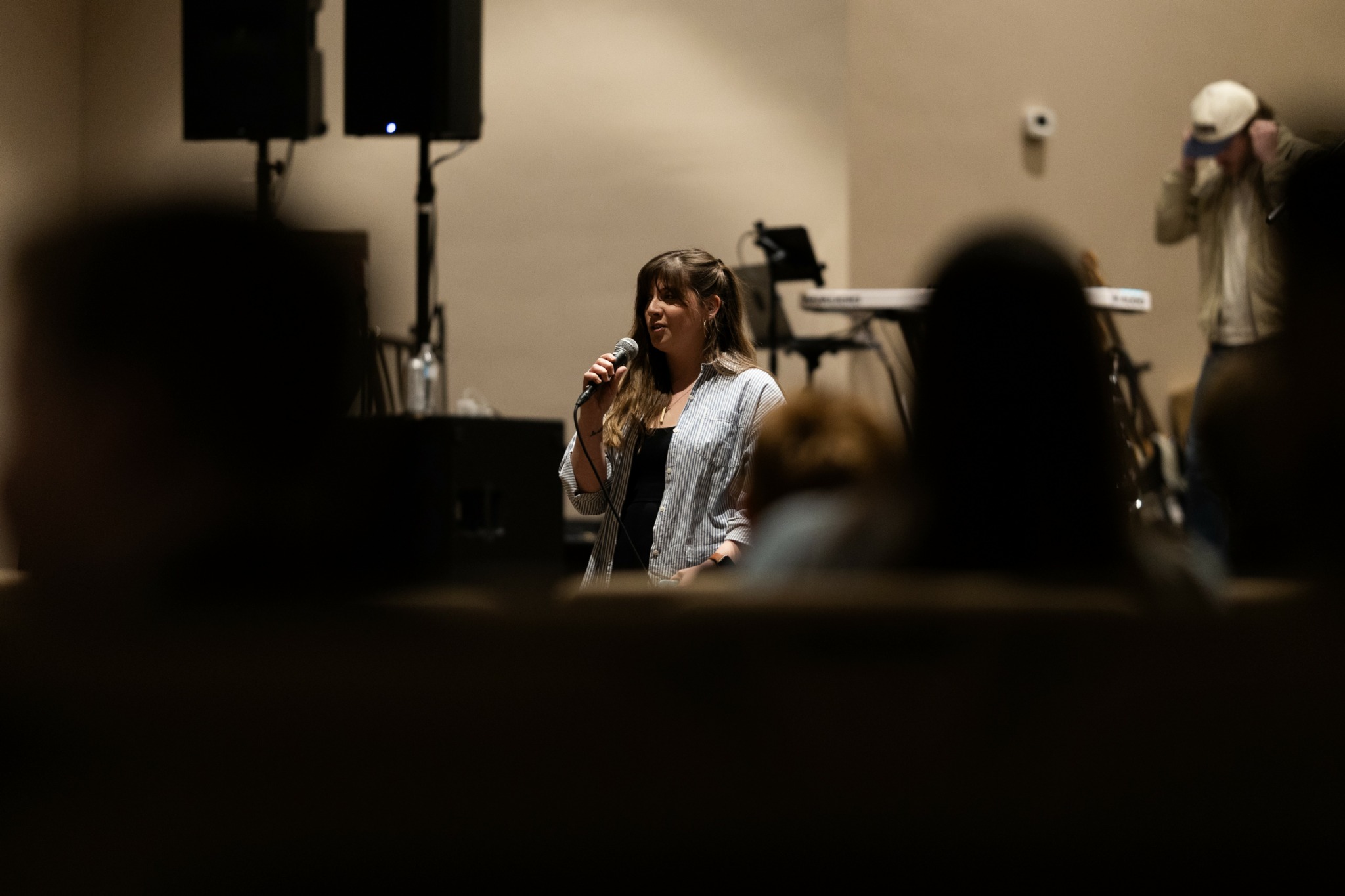
Image Credits
Liz Miller, Nichole Terrett Troyer, Tim Doerfler (@soapboxr)


